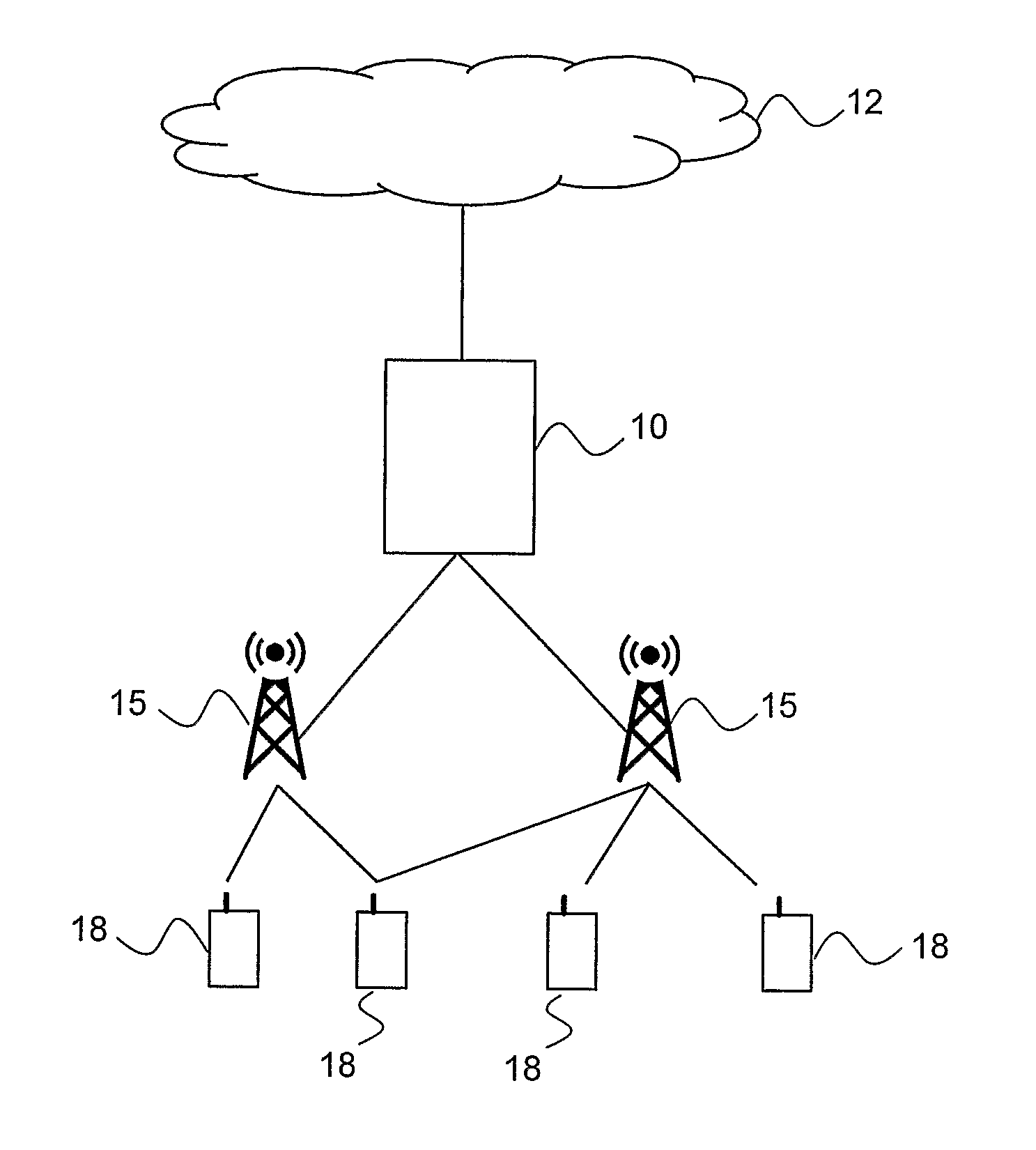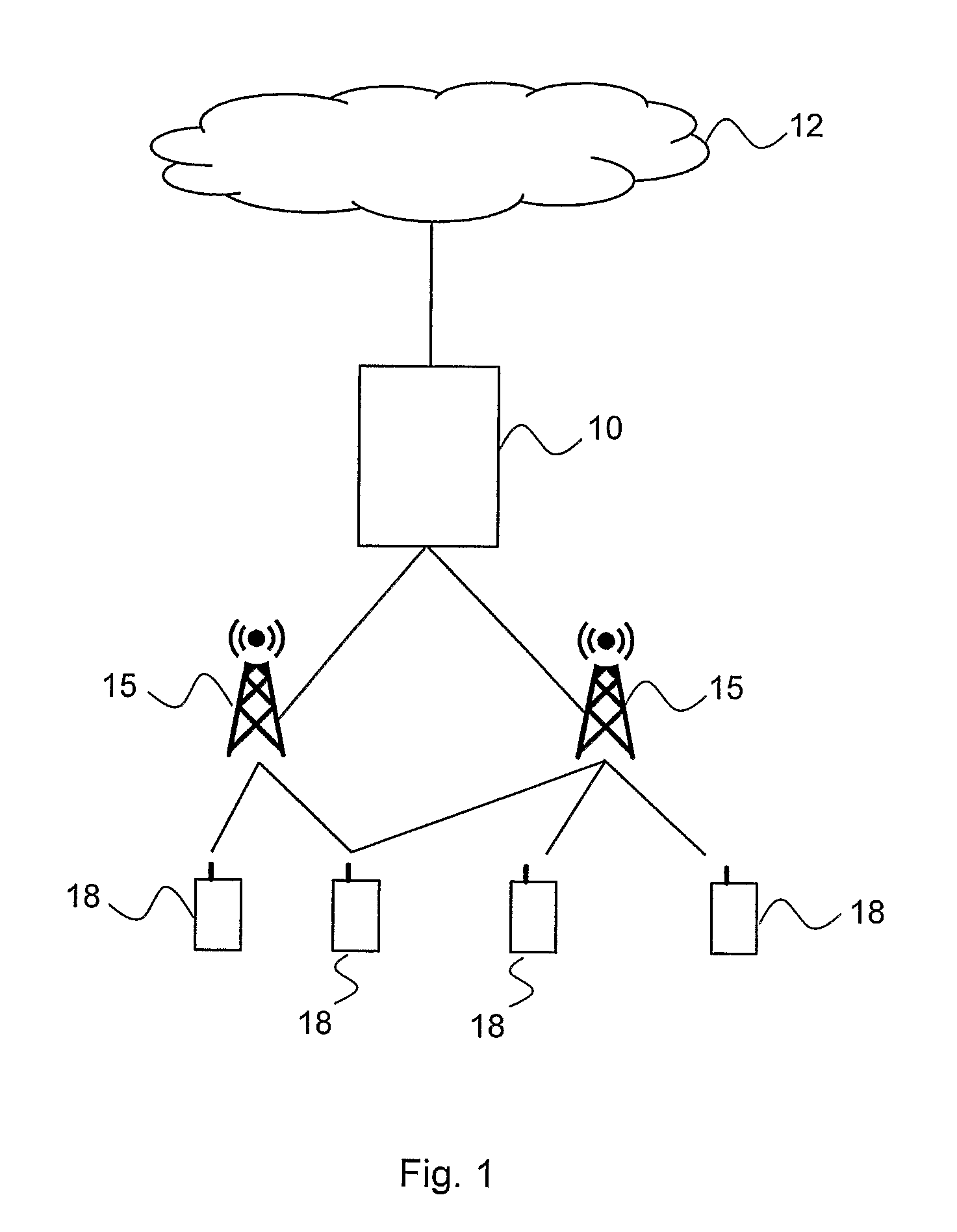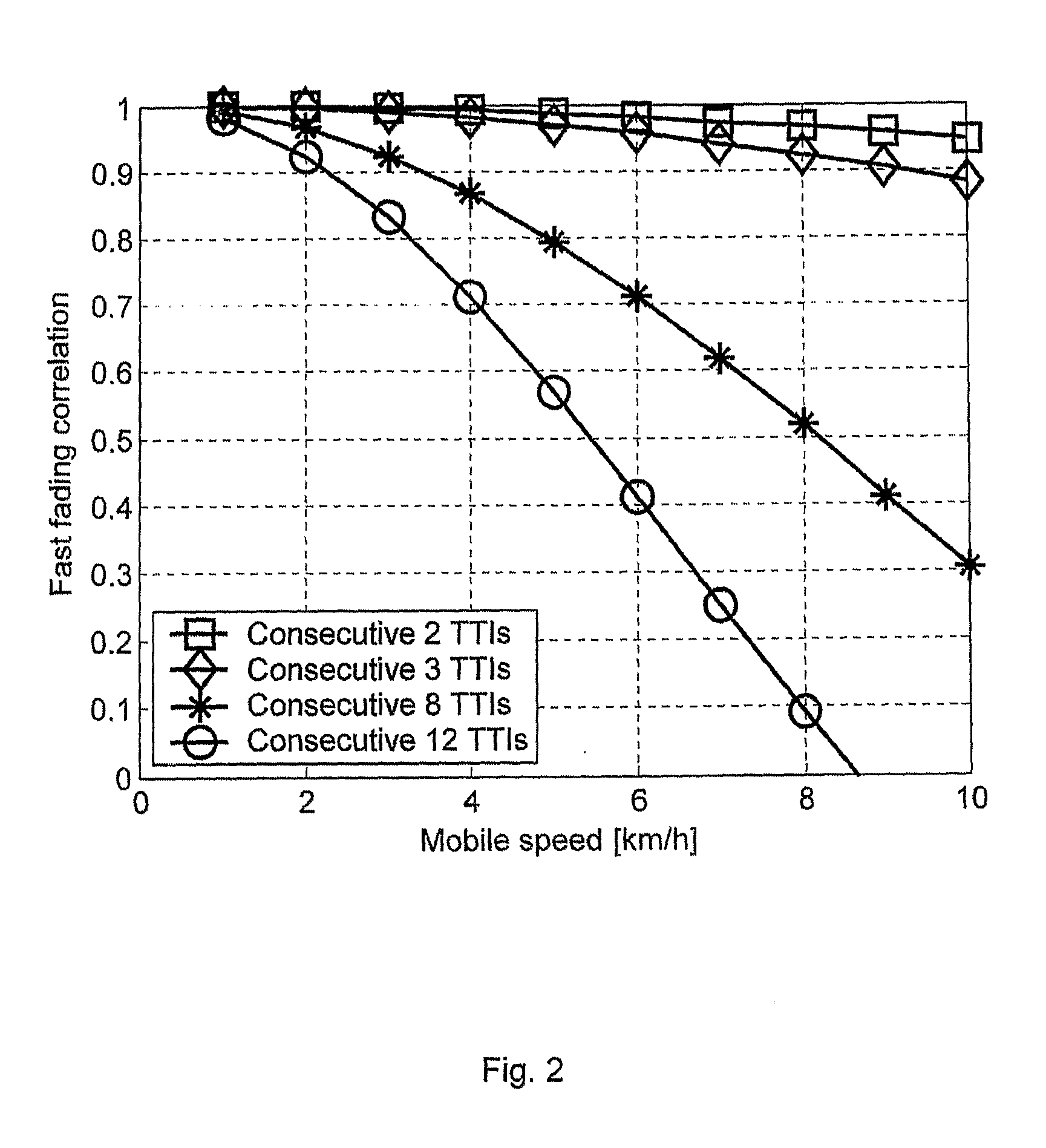Channel Quality Prediction in HSDPA Systems
a channel quality and channel technology, applied in the field of communication systems, can solve the problems of high intra-cell interference, waste of capacity, inefficient use of high speed-downlink shared channels (hs-dsch), etc., and achieve the effects of reducing the risk of user equipment overestimating the channel condition, reducing the retransmission time, and reducing the risk of underestimating conditions
- Summary
- Abstract
- Description
- Claims
- Application Information
AI Technical Summary
Benefits of technology
Problems solved by technology
Method used
Image
Examples
Embodiment Construction
[0021]FIG. 1 depicts a communication system such as a CDMA communication system including a Radio Access Network (RAN), such as the UMTS Terrestrial Radio Access Network (UTRAN) architecture, comprising at least one Radio Base Station (RBS) (or Node B) 15 (two are shown inFIG. 1) connected to one or more Radio Network Controllers (RNCs) 10. The RAN is connected to a Core network (CN) 12. The RAN and the CN 12 provide communication and control for a plurality of user equipments (UE) 18 that each uses downlink (DL) channels (i.e. base-to-user or forward) and uplink (UL) channels (i.e. user-to-base or reverse). On the downlink channel, the RBS 15 transmits to each user equipment 18 at respective power level. On the uplink channel, the user equipments 18 transmit data to the RBS 15 at respective power level.
[0022]In the present invention the base stations (Node Bs) predict the channel quality by using the available DL transmitted power and estimating the orthogonality together with the ...
PUM
 Login to View More
Login to View More Abstract
Description
Claims
Application Information
 Login to View More
Login to View More - R&D
- Intellectual Property
- Life Sciences
- Materials
- Tech Scout
- Unparalleled Data Quality
- Higher Quality Content
- 60% Fewer Hallucinations
Browse by: Latest US Patents, China's latest patents, Technical Efficacy Thesaurus, Application Domain, Technology Topic, Popular Technical Reports.
© 2025 PatSnap. All rights reserved.Legal|Privacy policy|Modern Slavery Act Transparency Statement|Sitemap|About US| Contact US: help@patsnap.com



